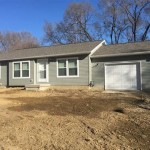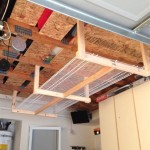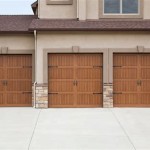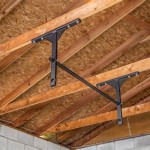Can You Put A Dryer Vent In The Garage Ceiling: Florida Law Considerations
The question of whether one can install a dryer vent in a garage ceiling in Florida is not a simple yes or no answer. It involves navigating a complex landscape of building codes, safety regulations, and environmental concerns. Florida's commitment to standardized building practices and fire safety, coupled with its unique climate considerations, heavily influences the acceptability of such an installation. This article aims to dissect the various factors that determine the feasibility and legality of venting a dryer through a garage ceiling in the Sunshine State.
Residential dryer venting is governed by the Florida Building Code (FBC), primarily focusing on exhaust methods that minimize fire hazards and ensure efficient moisture removal. The FBC adopts and amends the International Residential Code (IRC), making it the primary reference for building and renovation projects. When considering venting a dryer through a garage ceiling, specific sections of the FBC address duct materials, length of the duct run, termination points, and fire safety requirements. Understanding these regulations is critical before undertaking any installation.
The garage environment itself presents unique challenges. Garages are often attached to the main house, creating a potential pathway for fire and hazardous fumes. Moreover, garages frequently store flammable materials, increasing the fire risk associated with dryer operation. Consequently, any dryer vent installation within a garage must adhere to stringent safety protocols to mitigate these risks. This might include using specific fire-resistant duct materials, incorporating fire dampers, and ensuring proper sealing around penetrations in the garage ceiling and walls.
Local ordinances can further complicate matters. Municipalities and counties in Florida are permitted to adopt amendments to the FBC, reflecting local conditions and priorities. Therefore, it's imperative to consult with the local building department to determine if any specific regulations apply to dryer vent installations in garages within that jurisdiction. This involves reviewing local codes, obtaining necessary permits, and potentially undergoing inspections to ensure compliance.
Fire Safety and Building Codes
Fire safety is paramount when considering dryer vent placement, especially in a garage setting. Dryers produce heat and lint, which is highly flammable. Lint accumulation within the vent duct creates a significant fire hazard. The Florida Building Code addresses this risk through several provisions. Firstly, duct materials must be non-combustible or fire-resistant. Typically, rigid metal ducts are favored over flexible ducts, as the latter is more prone to lint buildup and can collapse, restricting airflow and increasing the likelihood of overheating. The FBC outlines the specific materials permitted for dryer ductwork.
Secondly, the code specifies maximum duct lengths to ensure efficient dryer operation and prevent excessive lint accumulation. Long duct runs increase resistance to airflow, causing the dryer to work harder and generate more heat. The FBC uses a formula to calculate the maximum allowable duct length, taking into account the number of bends and elbows in the duct run. Each bend reduces the effective duct length, necessitating shorter overall runs to comply with the code. Regular cleaning of dryer vents is also mandated to prevent lint buildup, although the FBC doesn't typically specify the frequency of cleaning, leaving that to manufacturer recommendations and best practices.
Thirdly, the termination point of the dryer vent must be located away from combustible materials and building openings. The FBC requires a minimum clearance distance between the vent outlet and any windows, doors, or air intakes to prevent exhaust from re-entering the building. In a garage, this can be particularly challenging, as garages often have limited exterior wall space and are typically used for storing items that could be flammable. The placement of the vent outlet must also comply with setback requirements from property lines, ensuring it doesn't create a nuisance or hazard for neighbors.
Moreover, the code mandates proper sealing around any penetrations through the garage ceiling or walls to maintain the fire-resistance rating of the assembly. Any openings created for the dryer vent must be sealed with fire-resistant sealant to prevent the spread of fire and smoke. This is especially critical if the garage ceiling forms part of a fire-rated assembly separating the garage from living spaces above. Fire dampers may also be required in certain situations to automatically close off the duct in the event of a fire, preventing flames and smoke from spreading through the ductwork.
Garage Environment Considerations
The garage environment presents several unique challenges that must be addressed when considering a dryer vent installation. Garages are often poorly ventilated and may contain flammable materials such as gasoline, oil, and paints. These materials create a heightened fire risk, making proper dryer vent installation even more critical. The potential for carbon monoxide (CO) buildup is another concern. If a vehicle is running in the garage, CO can accumulate, and a leaking or poorly sealed dryer vent could allow CO to enter the living spaces. Therefore, ensuring a tight seal around the ductwork and the vent termination point is essential to prevent CO infiltration.
The FBC addresses the unique challenges of garage environments through specific requirements for fire separation and ventilation. Garages attached to dwellings must be separated from the house by a fire-rated wall and ceiling assembly. This means that the garage ceiling must be constructed to withstand fire for a specified period, typically one hour. Any penetrations through this fire-rated assembly, including those for a dryer vent, must be properly sealed to maintain the integrity of the fire barrier. The FBC also mandates specific ventilation rates for garages to prevent the buildup of hazardous fumes. While this ventilation is primarily intended for vehicle exhaust, it can also help to mitigate the risk of CO buildup from other sources.
Additionally, the garage environment can be subject to moisture intrusion, especially in Florida's humid climate. If the dryer vent is not properly insulated, condensation can form on the ductwork, leading to mold growth and potential damage to the garage ceiling. Insulating the dryer vent ductwork can help to prevent condensation and maintain the integrity of the ceiling. The FBC may also require the use of moisture-resistant materials in the garage, such as pressure-treated lumber and mold-resistant drywall.
Finally, the storage of flammable materials in the garage requires careful consideration when positioning the dryer vent. The vent outlet should be located away from any stored gasoline, oil, or paints to minimize the risk of ignition. The FBC may also restrict the storage of certain flammable materials in garages, particularly if they are located near potential ignition sources. Adhering to these regulations and practicing safe storage habits are crucial for preventing fires in the garage.
Local Ordinances and Permitting
While the Florida Building Code provides a statewide framework for building regulations, local municipalities and counties have the authority to adopt amendments that address specific local conditions. These amendments can vary significantly from one jurisdiction to another, making it essential to consult with the local building department before commencing any construction or renovation project, including dryer vent installations.
Local ordinances may impose stricter requirements for dryer vent installations in garages than those outlined in the FBC. For example, some municipalities may require the use of specific duct materials or mandate the installation of fire dampers in all dryer vent systems. Others may have more stringent requirements for the location of the vent outlet or the sealing of penetrations through fire-rated assemblies. Failure to comply with these local ordinances can result in fines, project delays, and the requirement to remove or modify the non-compliant installation.
Obtaining the necessary permits is a crucial step in ensuring compliance with both the FBC and local ordinances. Most municipalities require a building permit for any structural alterations or renovations, including dryer vent installations. The permit application process typically involves submitting detailed plans and specifications for the project, including the layout of the ductwork, the type of materials to be used, and the location of the vent outlet. The local building department will review these plans to ensure they meet all applicable codes and regulations.
Once the permit is approved, the building department will conduct inspections at various stages of the project to verify that the work is being performed in accordance with the approved plans and specifications. These inspections may include a pre-drywall inspection to ensure that the ductwork is properly installed and sealed, and a final inspection to verify that the entire system meets all applicable codes and regulations. Failure to obtain the necessary permits and inspections can result in significant penalties and the potential for costly rework. Consulting with a licensed contractor who is familiar with local codes and permitting requirements can help to ensure a smooth and compliant dryer vent installation.

Venting A Clothes Dryer Into Garage Doityourself Com Community Forums

Atypical And Typical Dryer Vent Locations The Right Spots

Dryer Vent Safety Fire Risks Efficiency Waypoint Inspection
The Exhaust Of My Dryer Vents To Crawl Space House Is That Correct Should I Change It Or Leave As Appaly Has Always Been Like

Learn How To Reroute Dryer Vent From Garage Outside

Venting Your Dryer Into The Garage Think Again Worst Room
Is It Ok To Vent A Dryer Into House Quora

Dryer Vent Safety Fire Risks Efficiency Waypoint Inspection
Can An Electric Dryer Be Vented Into A Garage Quora

What Is Code For Dryer Vents
Related Posts








